TEN YEARS AGO TODAY! INDEPTH, COMPREHENSIVE AND THOROUGH 2014 KAWASAKI KX450F TEST
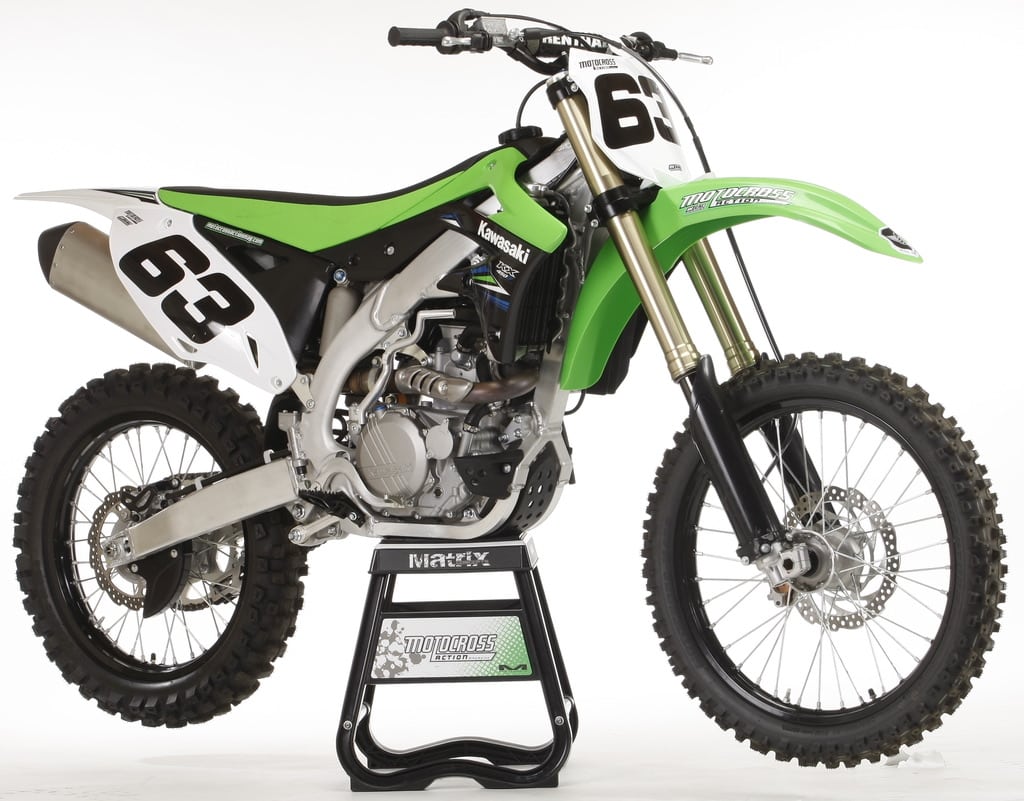
Q: FIRST AND FOREMOST, IS THE 2014 KX450F BETTER THAN THE 2013 KX450F?
A: No, and it isn’t all that different from the 2011 or 2012 KX450Fs, either. The most note-worthy difference over the last four years has been the addition of the Kayaba PSF air fork for 2013-14.
Q: WHAT DID KAWASAKI CHANGE ON THE 2014 ENGINE?
A: Nothing. Nada. Zip. In truth, the KX450F engine hasn’t changed much in the last few years. Back in 2012, Kawasaki installed an intake cam with 0.4mm more lift. Then, they took it back out for 2013 and reinstalled the 2011 cam (with 0.4mm less lift). In simple terms, the 2012 camshaft was the only new cam in the last four years?and it only lasted one season because its extra lift made the KX450F too powerful for the average rider.
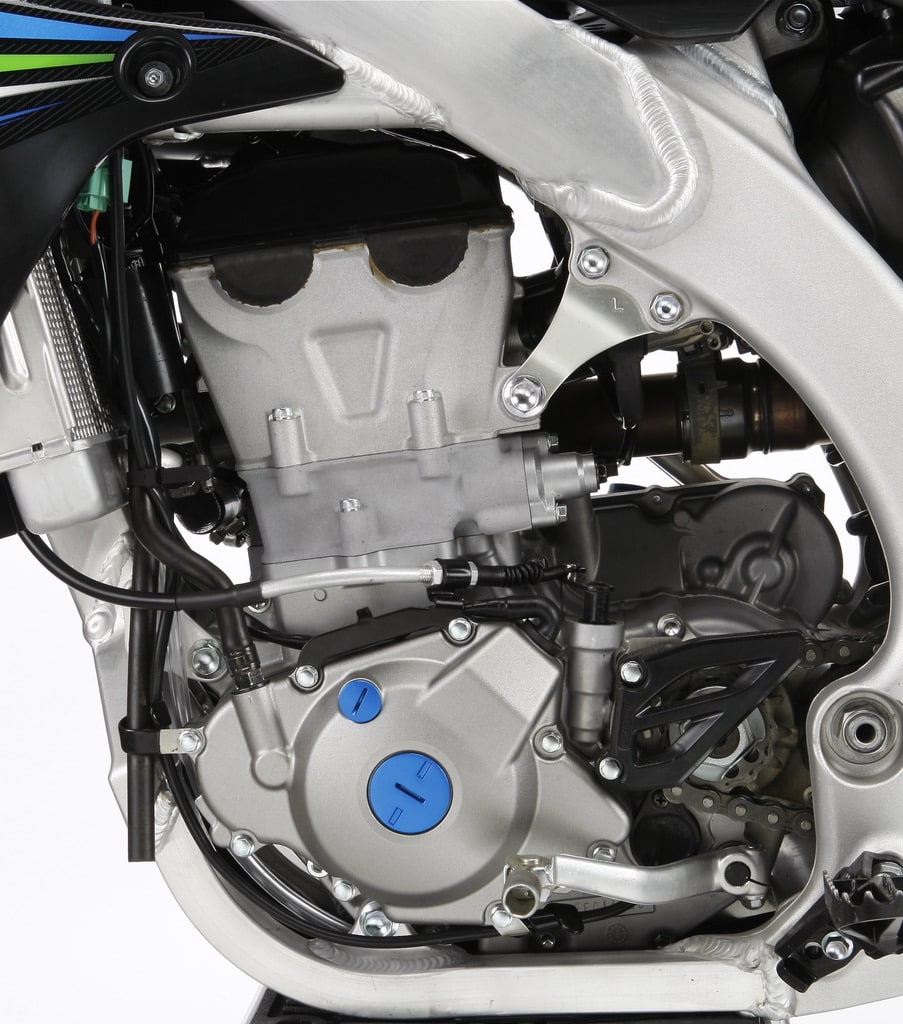
Q: IF THE ENGINE DIDN’T CHANGE FOR 2014, THEN WHAT DID?
A: Nothing. The 2014 Kawasaki KX450F is a BNG bike that didn’t even get BNG.
Q: SINCE THE 2014 MODEL IS UNCHANGED, IS IT ANY GOOD?
A: You bet. The 2011-2014 KX450F engine is incredible. The powerband is a thing of beauty. It is smooth down low, rolls on with authority and is the best all-around race engine of 2014. It doesn’t make the most power, but it has perfectly placed power. At 55.05 horsepower at 9000 rpm, the KX450F ranks third on the 2014 model year horsepower chart below the 2014 Yamaha YZ450F and KTM 450SXF. But, in race ability, it ranks first.
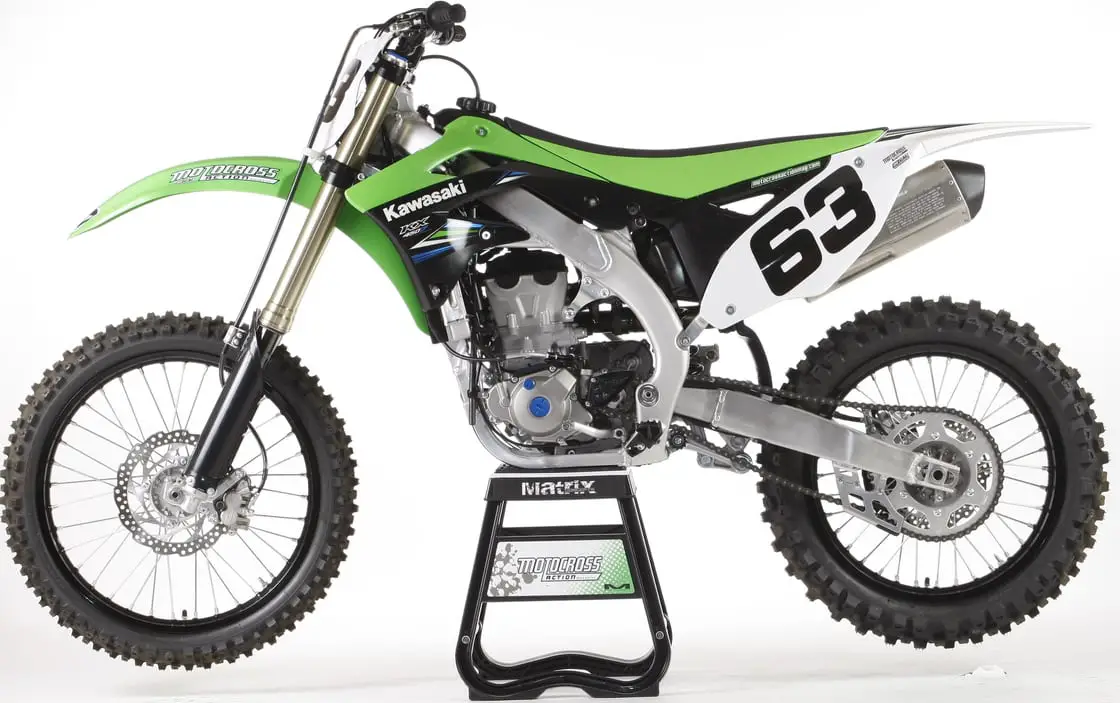
2014 Kawasaki KX450F: The rapid increases in modern engineering know-how have made American consumers expect all-new products every year. The 2014 KX450F isn’t all new, but it is still potent.
Every MXA test rider loves the KX450F powerband. It makes power where you need it and in ample-enough doses to get the job done. And, best of all, if you don’t have a secret Swiss bank account to spend on aftermarket pipes, cams, maps or head mods, you won’t be at a disadvantage with the stock engine. If you want more power, switch to the white plug-in. If you want less, go with the black one. The tunability is one of the best features of the KX450F engine package.
Q: WHAT DO YOU NEED TO KNOW ABOUT THE 2014 KX450F?
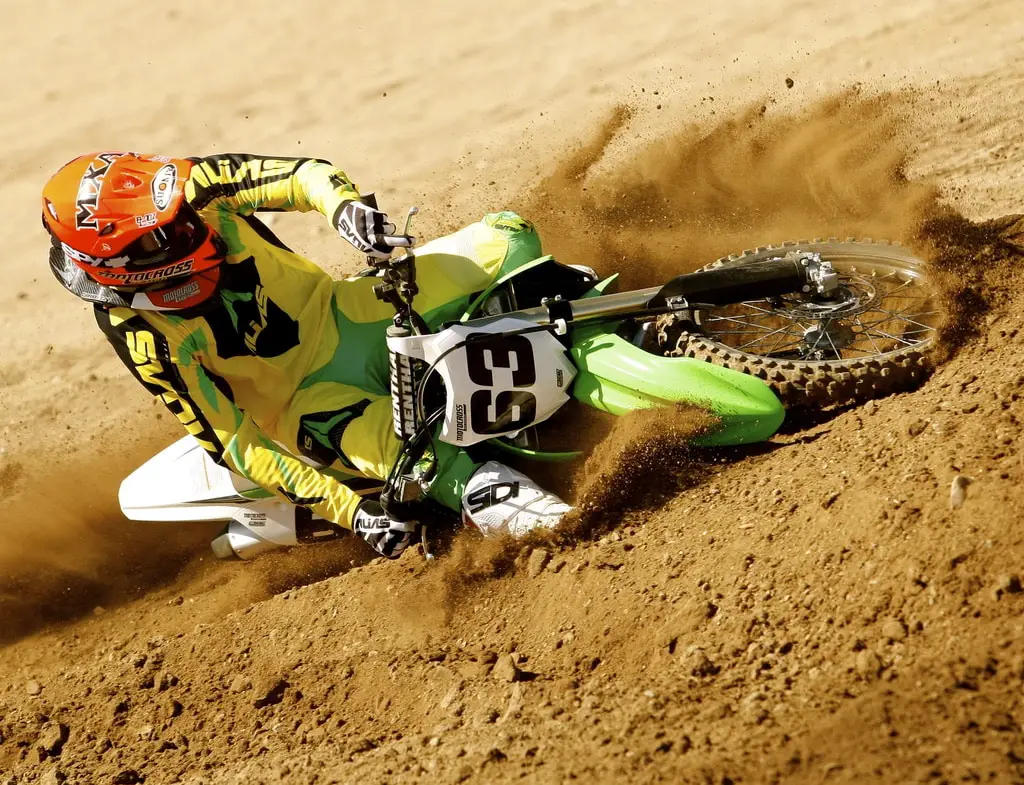
A: The 2014 Kawasaki KX450F has a lot of innovative features. Here’s our list
Footpegs. The KX450F footpegs are adjustable up and down. No MXA test rider moves the footpegs out of the stock position.
Bar mounts. If you move the bars to the forward mounting holes, it gets hard to access the air valves on the Kayaba PSF air forks. MXA runs either Splitstream crossover air valves or Works Connection rotating valves to make it easier to get the air in. Oh yeah, you have to check the air pressure before every day of riding.
Throttle tube. We loved last year’s 10mm-longer Kawasaki grips, but Kawasaki went back to the 10mm-shorter grips for 2014. Boohoo.
Front brake. The stock front brake is no match for the KX450F. Invest in an oversized front-brake rotor if you want to stop.
Chain guide. Order a T.M. Designworks Slide-N-Glide kit immediately, because the stock chain guide won’t last as long as it takes UPS to get the T.M. Designworks parts to your house.
Plug-in maps. The KX450F comes with three plug-in maps: stock (green), mellow (black) and aggressive (white). On the dyno, there was no perceptible horsepower difference between the stock and aggressive maps; on the other hand, the mellow map gave up one horsepower everywhere. The MXA test riders were equally split on the green and white maps. Although the power output was the same the white map felt snappier, crisper and more abrupt.
Gearing. We add one tooth to the rear sprocket to enable us to shift to third gear sooner. This maximizes the breadth of the powerband. We aren’t gearing it down to get more hit, just to get the KX450F into a broader and easier-to-use gear quicker.
Clutch. Unfortunately, the stock KX450F clutch pack cannot handle the mighty KX450F powerband. At the very least, install stiffer clutch springs, but if you intend to keep your bike for a long time, get a complete Hinson clutch.
Backfire screen. The KX450F’s wire screen is incredibly restrictive. We removed it, but that required a $40 spacer kit from Pro Circuit.
Launch Control. As a rule of thumb, the MXA test riders use this mantra: “Soft dirt, no Launch Control, Hard dirt, Launch Control.” Contrary to popular opinion, Launch Control does not affect the horsepower below 7000 rpm. Why not? Because nobody launches off the starting line with the engine at idle. Nope. They rev it up to eight grand and dump the clutch. So, Launch Control progressively makes less horsepower as the rpm climbs above 7000 rpm. The object of Launch Control is to lessen wheelspin in second gear. Once you shift to third gear, Launch Control is deactivated.
Q: HOW DOES THE 2014 KX450F HANDLE?
A: Kawasaki didn’t make any headway in improving the handling for 2014 because they didn’t make any changes to the chassis or suspension. We can live with the KX450F’s handling, but by no means is this jumbo-sized frame in the running for the best-handling bike of 2014. We never really liked its tendency to stand up in the center of corners and wallow under acceleration, but we’re willing to forgive a lot of its peccadilloes because the powerband covers up a lot of flaws.
Q: WHAT DID WE HATE?
A: The hate list:
(1) Brakes. These old-school brakes won’t stop 239 pounds of runaway locomotive. Honda, Yamaha, Suzuki and Kawasaki are also rans to the Brembos on both KTM and Husqvarna.
(2) Weight. For the ninth year running, it’s too big, too tall and too heavy. It best suits riders over six foot tall.
(3) Sound. This is the loudest bike on the track. It makes an ear-piercing 120.6 decibels on the AMA two-meter-max test. However, it does pass the SAE 94 dB test (conducted at 4500 rpm). It is important to note that local and amateur racers don’t have to comply with the two-meter-max standards—those are reserved for the 660 AMA Pro license holders. The 94 test is what amateurs are required to obey.
(4) Rear brake pedal. If you want to run the rear brake pedal low (as many old-school racers do), you have to hacksaw off some of the plunger’s threaded rod.
(5) Rear axle nut. We remove the cotter pin and axle nut and replace them with a self-locking Honda axle nut. It’s a cheap fix and makes life easier.
(6) Shifting. Don’t rush it, no matter how big a rush you are in.
(7) Fork seals. We’d do anything to stop having to replace forks seals in our PSF air forks (both Honda and Kawasaki), so we switched to SKF seals and run neoprene forks covers.
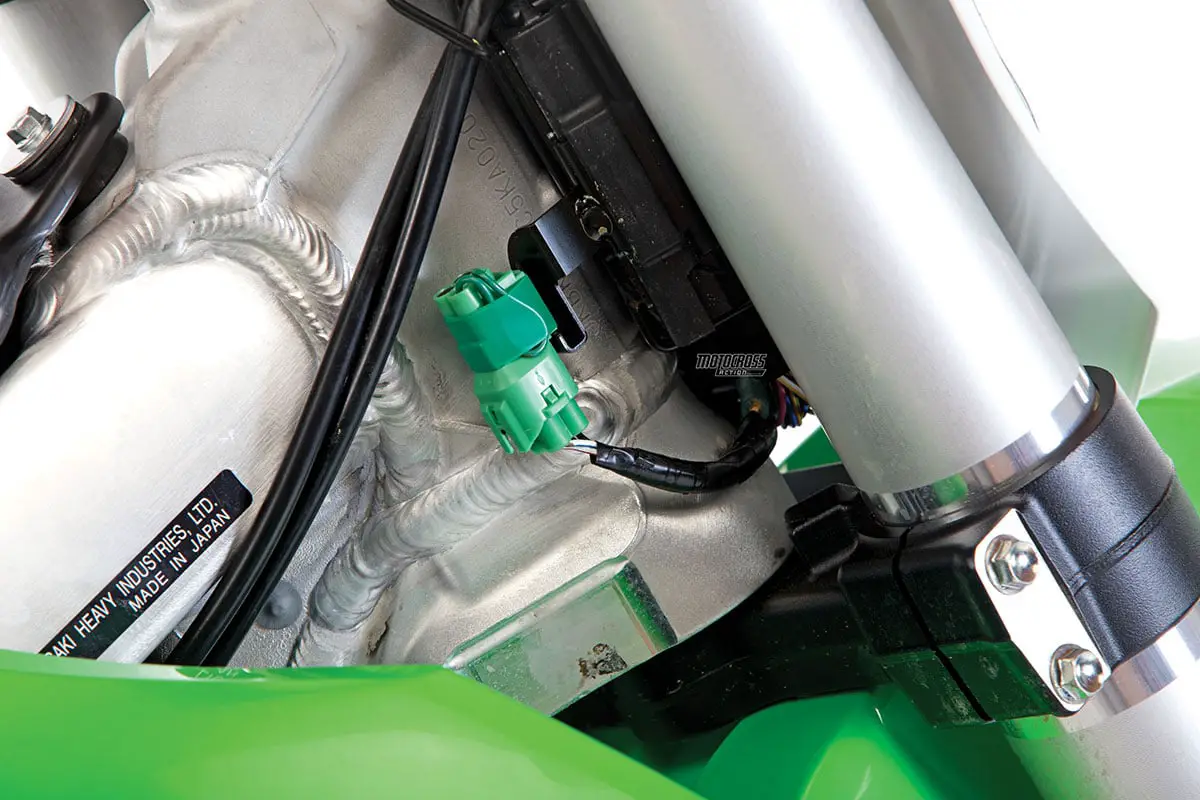
Magic wand: This plug-in can instantly change the powerband.
Q: WHAT DID WE LIKE?
A: The like list:
(1) Tires. The Bridgestone 403/404 tires work adequately on hard dirt, but not so well in loam or sand.
(2) Adjustable maps. You gotta love a bike that comes with three different powerbands—that can be changed in 30 seconds.
(3) Launch Control. You can use it or ignore it, but it adds a new dimension when the situation arises and that situation is a concrete or hardpack starting lines.
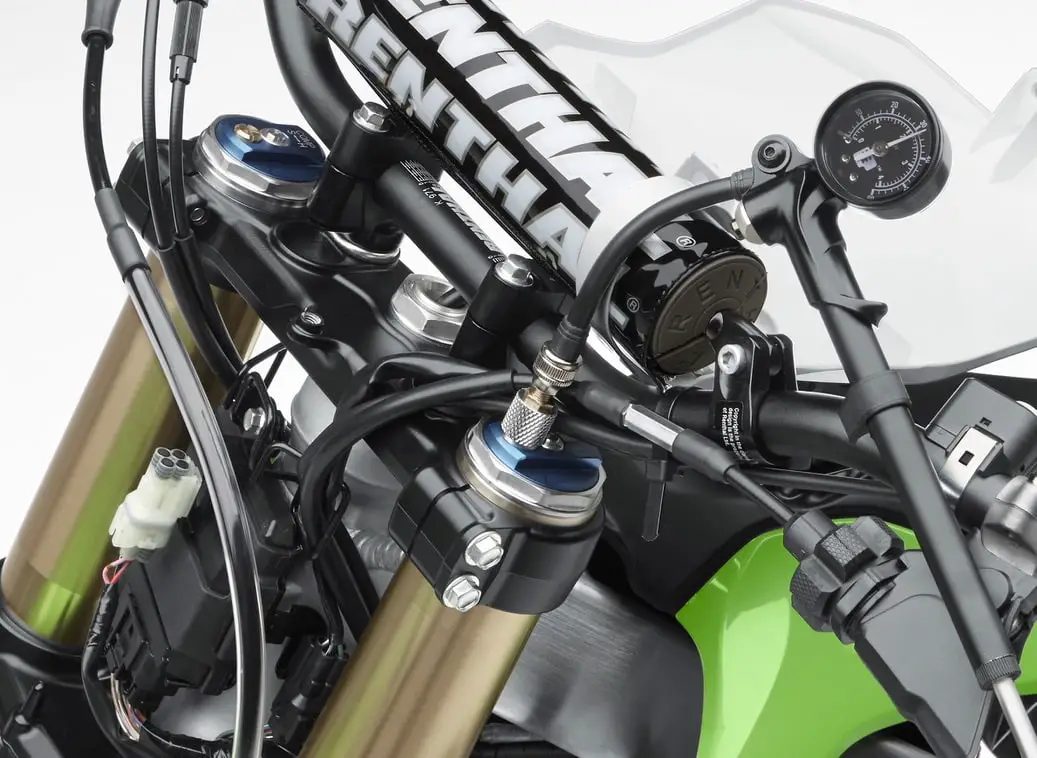 Air play: This gets old after awhile. The Kayaba PSF forks are adequate . Their one good trait is that the spring rate can easily be changed by the simple act of adding or removing air. However, the air pressure changes every day and must be set before you ride the bike.
Air play: This gets old after awhile. The Kayaba PSF forks are adequate . Their one good trait is that the spring rate can easily be changed by the simple act of adding or removing air. However, the air pressure changes every day and must be set before you ride the bike.
Q: WHAT DO WE REALLY THINK?
A: The suspension is acceptable, the handling passable, the shifting suspect, the clutch weak and the brakes mediocre, but the powerband is superlative. In order to get our hands on that luscious powerband, we have to make a few compromises in other areas.
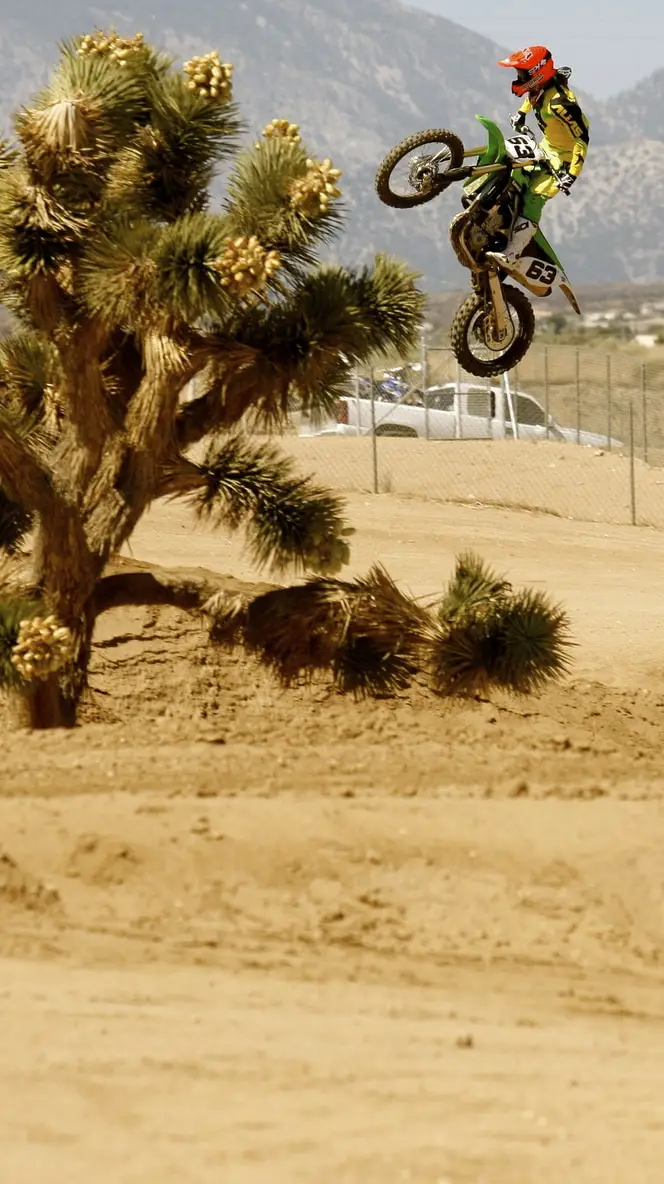
Love affair: MXA test riders may love the powerband, but the clutch, bulk, shifting and decibel output are romance killers.
MXA’S 2014 KAWASAKI KX450F SET-UP SPECS
This is how we set up our Kawasaki KX450F for racing. We offer it as a guide to help you find your own sweet spot.
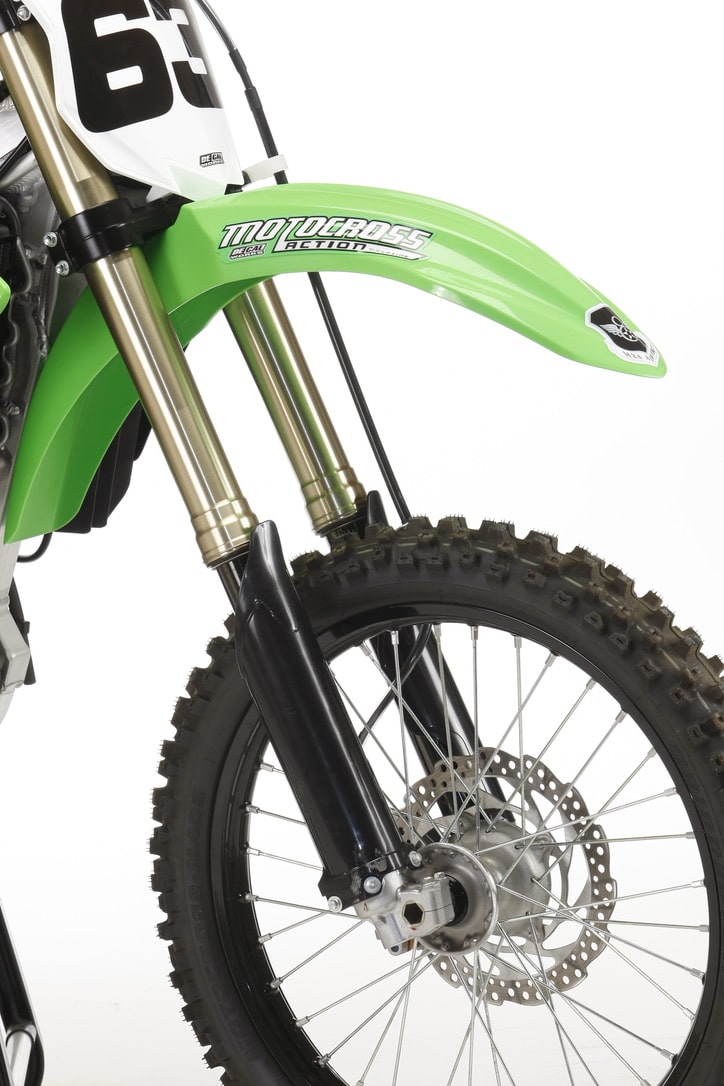
PSF FORK SETTINGS
The big news revolving around the KX450F and CRF450 for the last two model years has been the Kayaba Pneumatic Spring Fork (PSF). Air forks are an old concept, one that had been buried and forgotten for over 30 years; however, air is back. They have a nice feel when the air pressure is set to the proper psi. It is important that riders spend more time with the clickers and less time going up and down on air pressure. The air is just a replacement for the coil springs, and once it is right for the conditions, it is right. We recommend this fork setup on the 2014 Kawasaki KX450F:
Spring rate: 35 psi
Oil height: 245cc
Compression: 11 clicks out
Rebound: 19 clicks out
Fork-leg height: 5mm up
Notes: When the air pressure is wrong, you will recognize it right away. Too little air feels like you have a flat tire, while too much air will result in a serious spike at the end of the stroke when the pressure ramps up (in accordance with Boyle’s Law). We started at 35 psi, but that is the cold-air number. Once the bike was ridden, the air pressure went up as much as 4 psi. Since you can’t wait for the forks to cool down at the races, if the pressure climbs from 35 psi to 38 psi but you want the forks softer, just remove 1 psi from the 38 to make it 37 psi. Theoretically, going up 2 psi is the equivalent of going up one spring rate, from 0.47 to 0.48. Tuning is complicated by the ramp-up effect. Thus, if you add fork oil or air pressure to make the forks a little firmer, they will be very harsh at the end of the stroke.
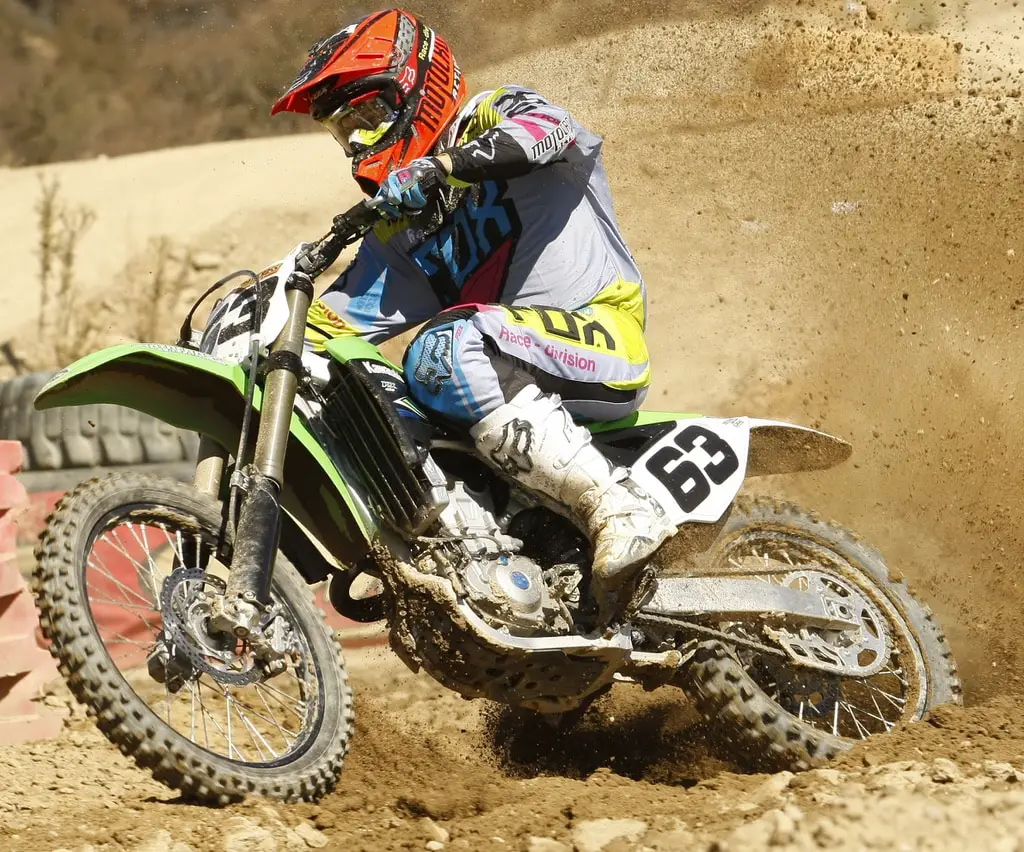
<strongIt’s a big bike with average handling, but it can be made to work.
KAYABA SHOCK SETTINGS
As for the KX450F shock, the overall setup is decent, and the 5.5 kg/mm shock spring covers a wide range of rider weights. We recommend this shock setup on the 2014 Kawasaki KX450F (stock specs are in parentheses):
Spring rate: 5.5 kg/mm
Hi-compression: 2 turns out (1-3/4 turns out)
Lo-compression: 10 clicks out (8 clicks out)
Rebound: 14 clicks out (19 clicks out)
Race sag: 100mm
Notes: We preferred the feel of longer aftermarket Pro Circuit pull rods because they lower the rear end, but more important, they stiffen the initial part of the shock’s stroke to lessen the KX450F’s tendency to wallow under acceleration.


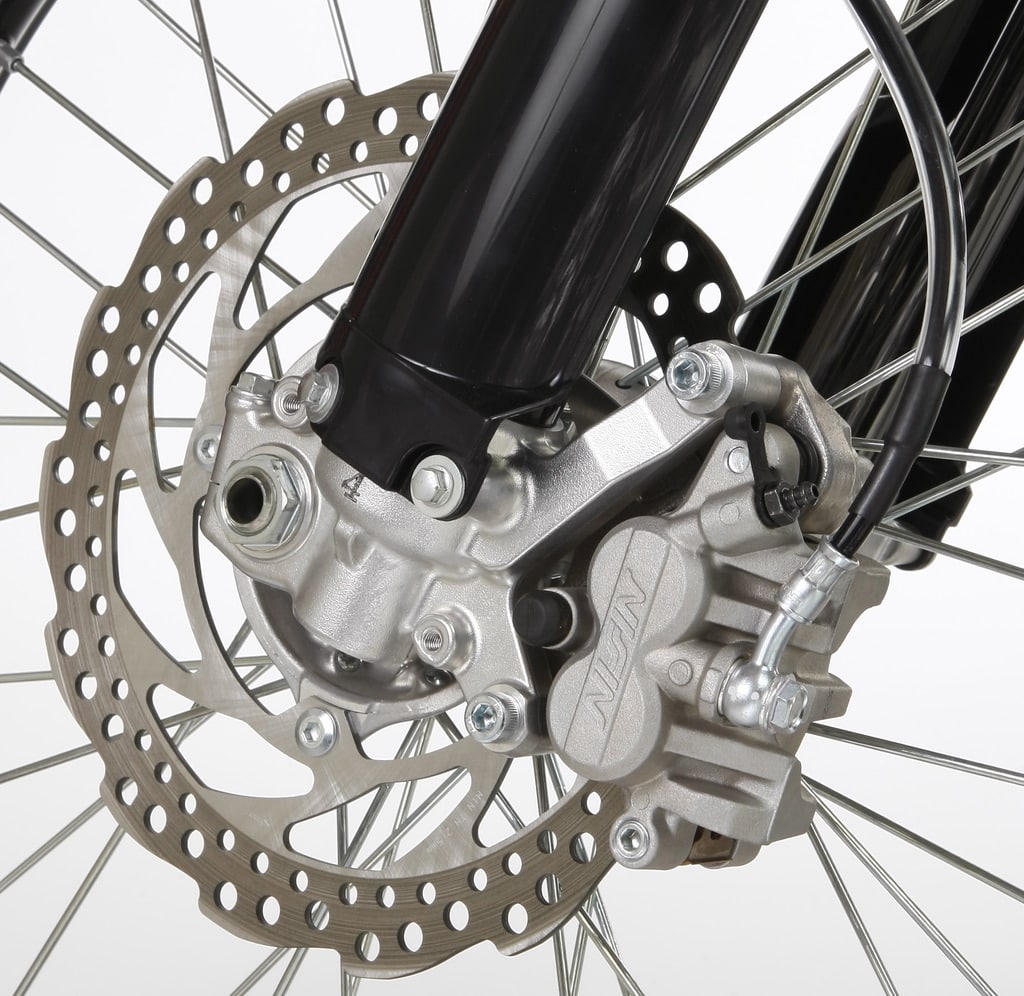
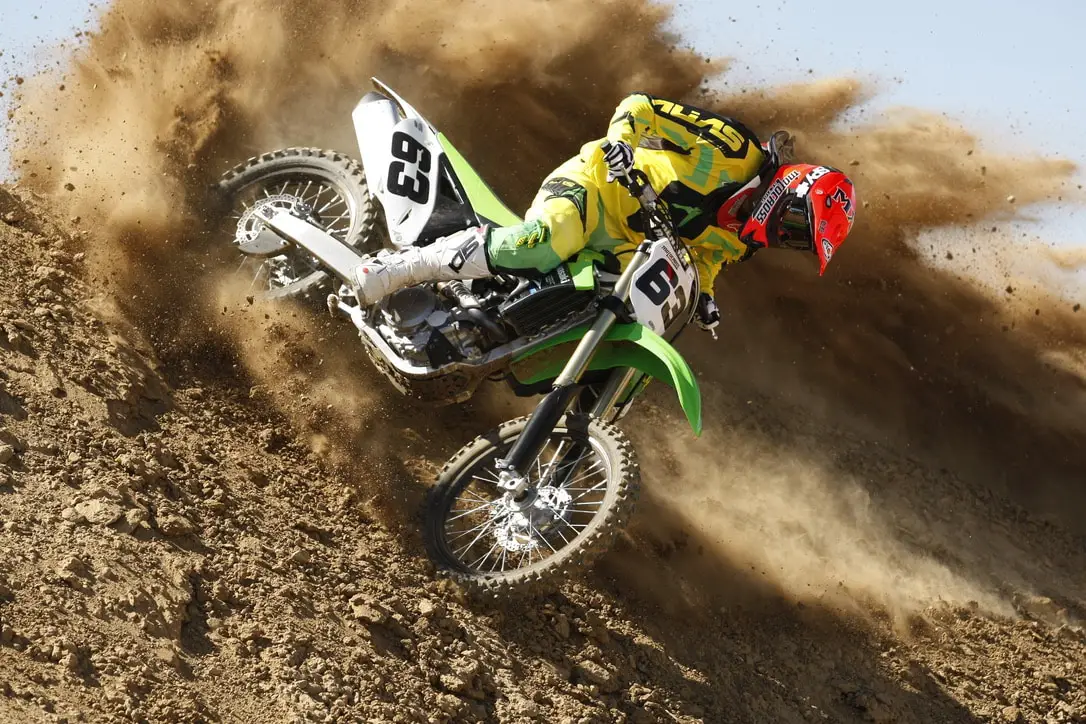





Comments are closed.